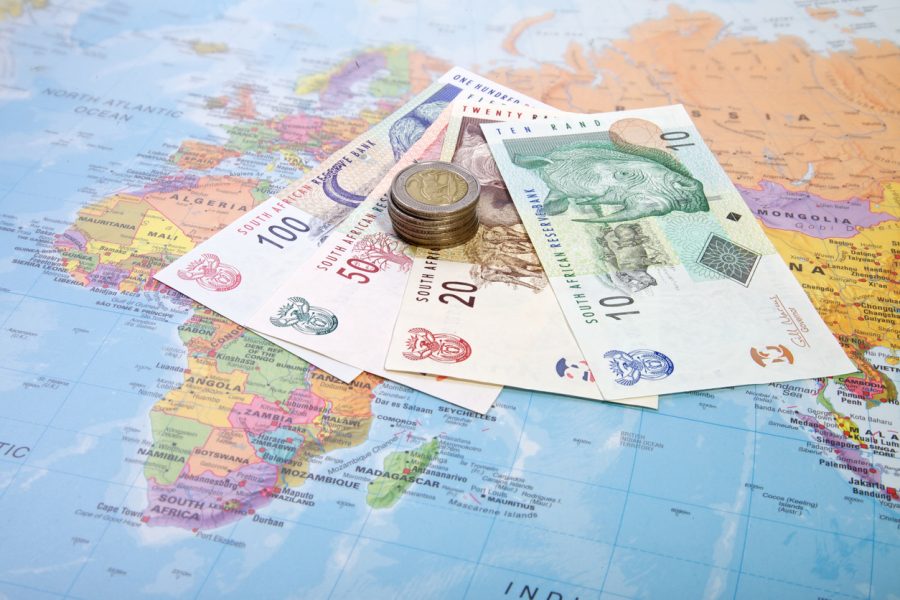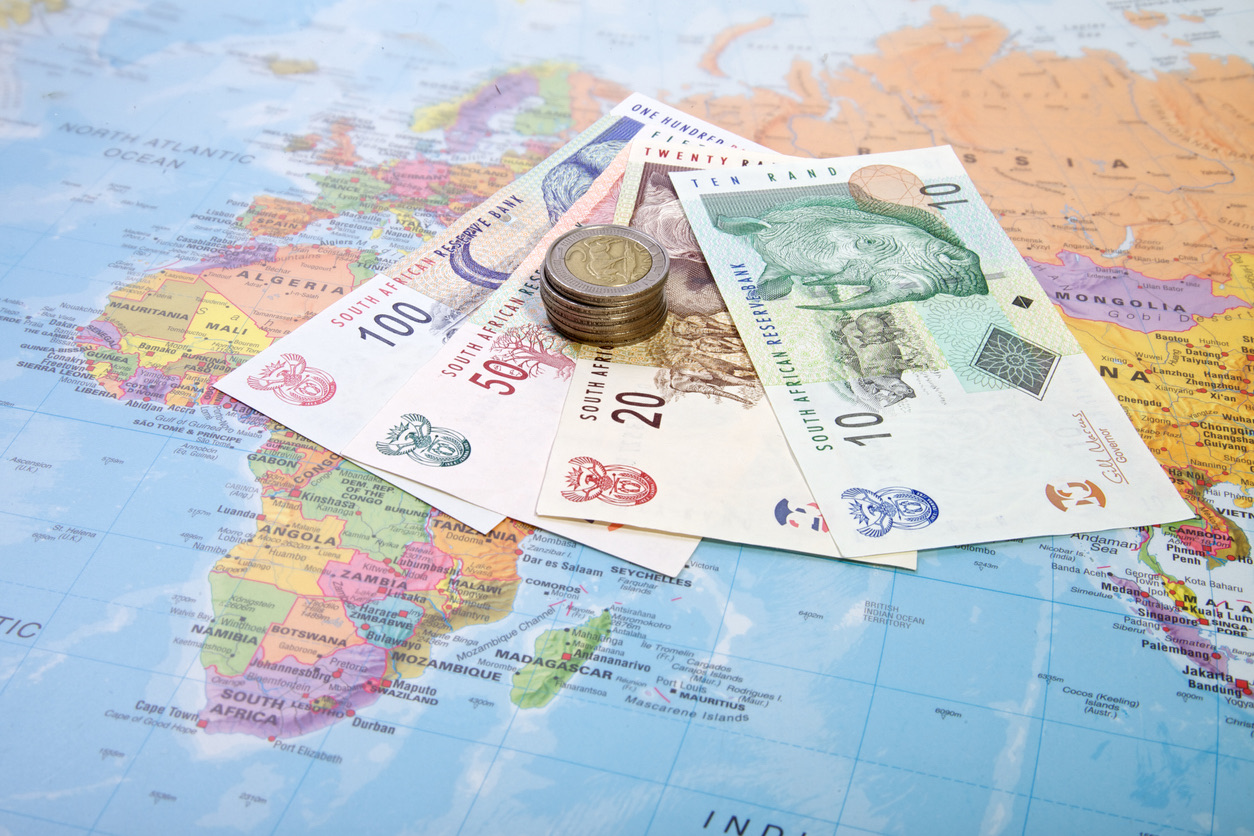
The South African rand edged higher than the dollar
The South African rand edged higher on Wednesday, reversing some of the losses incurred the previous day after its biggest trading partner China cut key policy rates.

Reuters: The South African rand edged higher on Wednesday, reversing some of the losses incurred the previous day after its biggest trading partner China cut key policy rates.
ALSO READ: Trump denounces ‘rigged’ indictment on racketeering charges
THE SOUTH AFRICAN RAND EDGED HIGHER
At 1538 GMT, the rand traded at 19.0750 against the dollar, over 0.3% stronger than its previous close. The rand had weakened earlier this week on mounting worries over the health of China’s economy. The dollar last traded around 0.02% weaker against a basket of global currencies.
The rand was little moved by Statistics South Africa data showing the country’s retail sales fell 0.9% year on the year in June after declining by a revised 1.6% in May. Analysts polled by Reuters expected a decline of 0.2% year on year. “Consumers remain financially constrained dealing with elevated living costs, high interest rates and accordingly lower purchasing power,” Investec analyst Lara Hodes said in a research note.
ALSO READ: Who are the richest South Africans in the world today? – 17 August 2023
Retail sales have contracted in annual terms every month since December 2022, with rolling power blackouts a contributing factor. Shares on the South African Stock Exchange fell, with the blue-chip Top-40 index ending 1% lower. South Africa’s benchmark 2030 government bond was marginally stronger in early deals, with the yield down 1 basis point to 10.345%.
U.S. DOLLAR
Reuters: The dollar pushed the yen deeper into intervention territory on Thursday as a resilient U.S. economy underscored the need for higher-for-longer interest rates, contrasting with a still strikingly dovish Bank of Japan. The Australian dollar sank to a nine-month low, taking its New Zealand counterpart along with it, after data showed that Australia’s employment unexpectedly fell in July while the jobless rate ticked higher. The yen weakened to 146.565 per dollar, its lowest level since November, having come under renewed pressure as a result of interest rate differentials between the U.S. and Japan’s ultra-low rate environment. It last bought 146.37 per dollar.
The Japanese currency has come under close watch since it touched the key 145 per dollar level for the first time in about nine months last Friday, crossing into a zone that sparked an intervention by Japanese authorities in September and October last year. “That sharp rise in dollar/yen definitely has increased the risk that the Japanese authorities will have to step into the FX market again to support the yen,” said Carol Kong, a currency strategist at Commonwealth Bank of Australia. Meanwhile, the dollar has drawn support from a recent run of resilient U.S. economic data, which reinforced the view that interest rates will remain at restrictive levels for some time.
ALSO READ: Who is the richest person in the world today? Top 10 list – 17 August 2023
Data on Wednesday showed that U.S. single-family home building surged in July and permits for future construction rose, while a separate report revealed production at U.S. factories unexpectedly rebounded last month. “We’ve got the U.S. staying really resilient still, under the weight of high interest rates,” said Carol Kong, a currency strategist at Commonwealth Bank of Australia. “Even though inflation has come down a long way, it is still some way away from the Fed’s 2% target, so I think the FOMC will have to be patient and maintain monetary policy at a restrictive level in order to win that last mile against inflation.”
Minutes of the Fed’s July policy meeting showed officials were divided over the need for more rate hikes last month, citing the risks to the economy if rates were pushed too far. Against a stronger greenback, the euro fell to a six-week low at $1.0862, while sterling dipped 0.1% to $1.2720. Despite a sharp drop in Britain’s headline inflation rate, key measures of price growth monitored by the Bank of England failed to ease in July, data on Wednesday showed. “We expect 25-basis-point rate hikes in both September and November, for a peak policy rate of 5.75%,” said Wells Fargo economist Nick Bennenbroek of the Bank of England’s monetary policy outlook. “Our view remains for slower UK growth and, eventually, a mild UK recession.”
The Australian dollar was last 0.5% lower at $0.63925, having earlier tumbled more than 0.9% to a trough of $0.6365 following the employment data release. The softer reading stoked speculation the Reserve Bank of Australia might be done hiking interest rates. The kiwi was similarly yanked to a low of $0.5903, with both currencies touching their weakest levels since November. “Cracks are finally appearing in the employment data, and that should clear up any doubt over whether the RBA is done hiking,” said Matt Simpson, senior market analyst at City Index. “They’re done at 4.1% as far as I’m concerned now, with persistently weak data from China and easing from the People’s Bank of China adding to the case of a peak rate.”
ALSO READ: A new Cape Winelands airport is on the way
The two antipodean currencies, often used as liquid proxies for the yuan, have also taken a beating over the past few sessions as a result of the darkening outlook over China’s economy. The offshore yuan hit a fresh nine-month low of 7.3490 per dollar, while its onshore counterpart similarly weakened to a nine-month trough of 7.3174 per dollar. “Given the sharp deterioration in the Chinese economy, there’s now a higher sense of urgency among policymakers, so I think there is now a higher likelihood that they will be forced to announce some more material fiscal stimulus package,” said CBA’s Kong.
China’s major state-owned banks were seen selling U.S. dollars to buy yuan in onshore and offshore foreign exchange markets this week during London and New York trading hours, people with direct knowledge of the matter told Reuters, in an attempt to slow the yuan’s depreciation. The U.S. dollar index touched a two-month high of 103.59.
BRITISH POUND
FXStreet: The GBP/USD pair edges lower during the Asian session on Thursday and extends the overnight pullback from the 1.2765 area, or a multi-day peak. The downtick is exclusively sponsored by the underlying bullish sentiment surrounding the US Dollar, though spot prices manage to hold above the 1.2700 mark in the wake of rising bets for further interest rate hikes by the Bank of England. The USD Index, which tracks the Greenback against a basket of currencies, climbs to its highest level since June 12 and is supported by the Federal Reserve’s hawkish outlook.
ALSO READ: NSFAS students march to parliament
In fact, the minutes of the July 25-26 FOMC meeting released on Wednesday revealed that policymakers were divided over the need for more rate hikes, though continued to prioritize the battle against inflation. Moreover, the incoming stronger US macro data points to an extremely resilient economy and keeps the door open for one more 25 bps lift-off later this year. The outlook pushes the yield in the benchmark 10-year US government bond to its highest level since 2008 and acts as a tailwind for the buck.
Apart from this, a generally weaker tone around the equity markets turns out to be another factor that benefits the Greenback’s relative safe-haven status and exerts some pressure on the GBP/USD pair. Against the backdrop of concerns about the worsening economic conditions in China, worries about headwinds stemming from rapidly rising borrowing costs fuel recession fears and weigh on investors’ sentiment.
The downside for the GBP/USD pair, however, seems cushioned, at least for the time being, amid growing acceptance that the UK central bank will raise interest rates again at its next monetary policy meeting in September. The expectations were reaffirmed by stronger UK wage growth data released on Tuesday, which added to worries about long-term inflation. This, along with the upbeat UK GDP report released last week and Wednesday’s slightly higher-than-expected UK CPI print, should allow the BoE to continue tightening its monetary policy.
ALSO READ: SA universities: UCT continues to lead the pack in world rankings
The aforementioned mixed fundamental backdrop makes it prudent to wait for strong follow-through selling before confirming that the recent bounce from the 100-day Simple Moving Average, around the 1.2615 region, or the lowest level since June touched last week, has run its course. Market participants now look to the US economic docket, featuring the usual Weekly Initial Jobless Claims and the Philly Fed Manufacturing Index. This, along with the US bond yields will influence the USD and provide some impetus to the GBP/USD pair.
GLOBAL MARKETS
Reuters: Asian shares sank to nine-month lows on Thursday, while the dollar was at a two-month peak as fears over China’s sluggish economic recovery and concerns that the Federal Reserve may still raise interest rates rattled investors. MSCI’s broadest index of Asia-Pacific shares outside Japan slid to 495.03, its lowest since Nov. 29, before clawing back some of its losses to trade 0.49% lower at 500.43. The index down about 8% for August and set for its worst monthly performance since September. The dark mood is set to continue in Europe with Eurostoxx 50 futures down 0.51%, German DAX futures down 0.55% and FTSE futures 0.35% lower.
The pan-European STOXX 600 hit a fresh one-month low on Thursday, weighed down by luxury companies that are exposed to Chinese consumer demand. China stocks have been in the doldrums in the past few weeks as a series of economic data has laid bare the stuttering post-pandemic recovery, with investors so far unimpressed with moves from policymakers and clamouring for more stimulus.
ALSO READ: Former NC HOD found guilty of unlawful deals worth R13 Million
On Thursday, China’s blue-chip CSI 300 Index was flat, while Hong Kong’s Hang Seng Index was 0.12% lower after hitting a near nine-month low earlier in the session. “I still think that there will be more action coming from policymakers,” Herald van der Linde, chief Asia equity strategist at HSBC, told the Reuters Global Markets Forum. “It just takes a bit of time.” Van der Linde said the appetite to invest in China is very low. “And that appetite has to do with confidence, and that won’t change too quickly. It would be good if we would get some stimulus for consumers.”
Adding to the worrying landscape for the world’s second biggest economy is the deepening property sector crisis. Zhongzhi Enterprise Group on Thursday told investors it is facing a liquidity crisis and will conduct a debt restructuring, according to video footage of a meeting. The move comes after Zhongrong International Trust Co, a leading trust company controlled by Zhongzhi, missed payments on dozens of investment products since the end of July, according to investor sources. Overnight, Wall Street ended lower after minutes from the Fed’s July meeting showed officials were divided over the need for more interest rate hikes.
“Some participants” cited the risks to the economy of pushing rates too far even as “most” policymakers continued to prioritise the battle against inflation, the minutes showed. The U.S. central bank hiked rates by 25 basis points at the July meeting after standing pat in June. The commentary from officials, including the hawks suggest a willingness to pause again in September, but to leave the door ajar for a further hike at either November of December meetings, ING economists said in a note. “We think the Fed will indeed leave interest rates unchanged in September, but we don’t think it will carry through with that final forecast hike,” they said, pointing out that further rate hikes could heighten the chances of recession.
ALSO READ: Newspaper front pages from around the world, 17 August 2023
